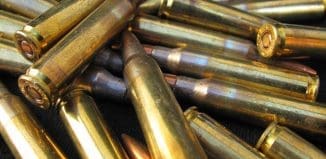Could Bullets Avoid Civilian Casualties?
This post is also available in:  עברית (Hebrew)
עברית (Hebrew)
The US Army is working on a new “safe” bullet. Safe to bystanders, at least, but still just as lethal for the intended target. The bullets are designed to self-destruct after a set distance in order to prevent accidentally hitting anyone standing beyond the target range.
Brian Kim, Mark Minisi, and Stephen McFarlane – civilian contractors at the US Army’s Picatinny Arsenal – developed the new .50 calibre bullet. That’s half an inch – 1.27 cm – certainly no small business. The calibre has been used for some one hundred years, mostly in the M2 Browning heavy machine guns that are used in helicopters, small boats, tanks, and by infantry units.
The round is extremely powerful – almost 29 times as powerful as a 9 mm bullet – and can penetrate through cinder block walls. That’s precisely where its appeal comes from. The problem is that once you’re past the wall, you don’t know what’s behind it or if you want to hit it.
The answer is to get the bullet out of the air before it hits anyone you don’t want it to. To do this, the “Limited Range Projectile,” as it is called, incorporate a pyrotechnic agent that starts working as soon as the bullet is fired. The agent deforms the bullet, making it aerodynamically unstable, and brings it to the ground.
This solution does not affect the effectiveness of the bullet. According to the US Army Readiness Development and Engineering Command, this bullet performs as well if not better than existing .50 calibre bullets at penetrating 9.5 mm steel armour.
The bullet is still not available for use, and will likely continue to be developed for the next few years. But once it hits the shelves, it should help greatly reduce the risk of civilian casualties.
























